EVENTS
10 Apr 2024
GTX24 – Bringing the world to Melbourne
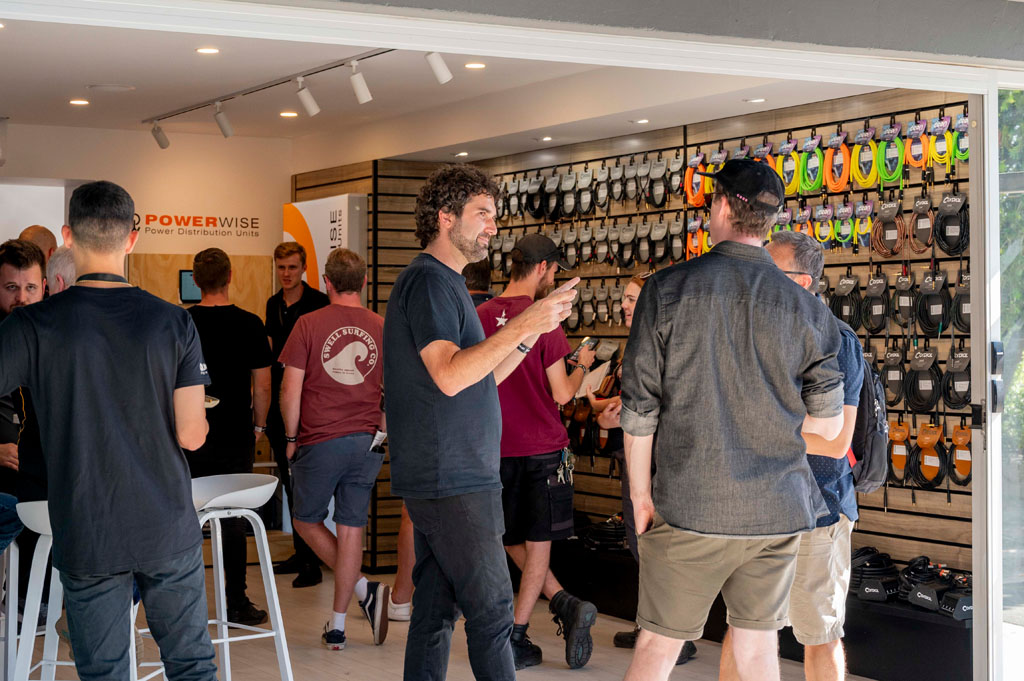
Subscribe to CX E-News
Distributor and manufacturer Group Technologies really know how to throw an industry shindig. Their now annual in-house tradeshow, GTX, runs at their beautifully appointed Melbourne HQ, featuring dedicated demo and showcase spaces for each section of their business. A host of overseas visitors representing their brands were in attendance, as well as over 300 customers, for the 2024 edition on 21 February.
GT’s Pascoe Vale premises has been immaculately renovated to showcase their consoles, loudspeakers, studio products, cabling, and more. Unknown to some, audio brand’s Quest design and manufacturing happen behind the scenes in the same building. It’s an Australian audio powerhouse on one massive industrial block.
I caught up with all of the new product news, international rock stars, and a lot of colleagues on the day. I had to miss the legendary party that happened that evening, but what happens at a Group Tech party, stays at a Group Tech party!
Austrian Audio
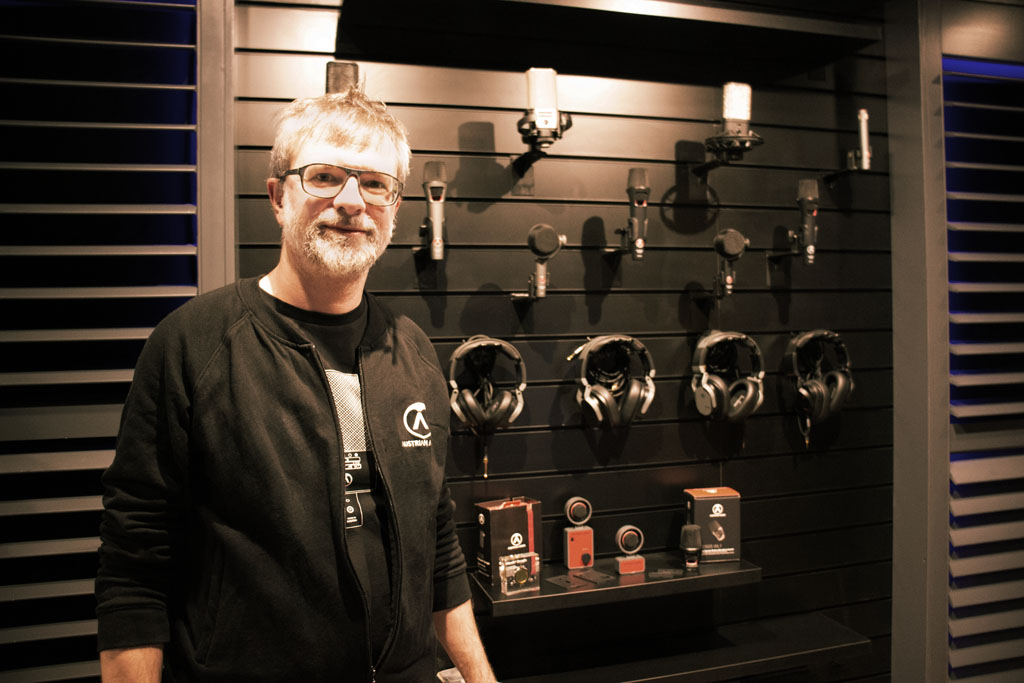
Kurt Richter, Sales Rep
Joining us from Vienna, Kurt Richter isn’t shy about Austrian Audio’s origin story; “Austrian Audio’s employees came from AKG,” states Kurt. “Not all of us, but most of us. We are inspired to improve on the microphone technology AKG developed. And that’s exactly what we’ve done with our OC7.”
The OC7 is a condenser instrument microphone with an incredibly useful swivelling head. “It shares the same capsule as our small condenser microphone, the CC8. It’s based on the legendary CK 1 capsule from AKG.”
Another improvement inspired by AKG is the use of ceramic capsules in Austrian Audio’s premium OC818 and OC18 condenser mics. “The original AKG brass capsule CK12 was one of the most respected microphone capsules on the planet,” explains Kurt, “but it was so hard to build that it had an up to 80% failure rate, which wasn’t possible to sustain economically. They changed to nylon, but it wasn’t the same. Our first design goal was to build a new capsule. Ceramic is a fantastic material to build microphone capsules; it doesn’t have problems with humidity, it’s a total isolator, and it has enough weight. We can produce it to the tiniest tolerances, and it doesn’t age. If you buy an OC818 or OC18, and three years later you buy another one, you will have a matching pair.”
DiGiCo
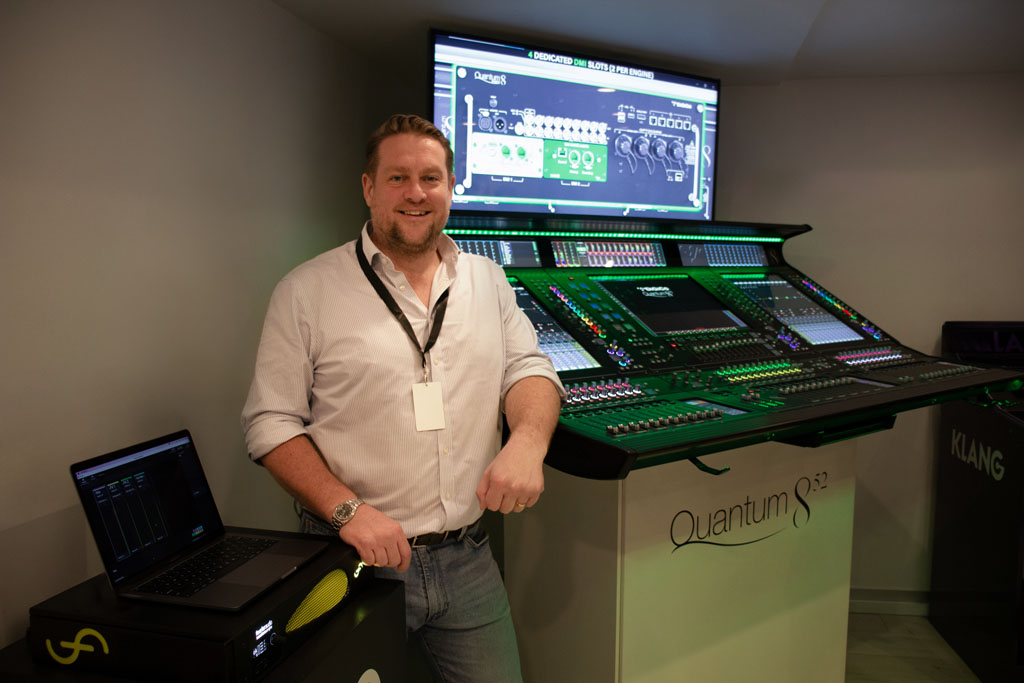
Austin Freshwater, Managing Director
A beaming Austin Freshwater flanked the big new flagship for DiGiCo, the Quantum 852. “This is the first time showing it in Australia, and the southern hemisphere for that matter,” boasted Austin. “We’ve got loads of people already booked in to come and see it. We’ve been messaged by everyone we know here that can’t wait to get their hands on it. Everyone who’s seen it today has been blown away. On top of that, we’re showing the Fourier Audio transform.engine, our VST3 plugin server, which is a game-changer, as it means you can use almost any plug-in with our desks. We are well set for the year!”
Cordial
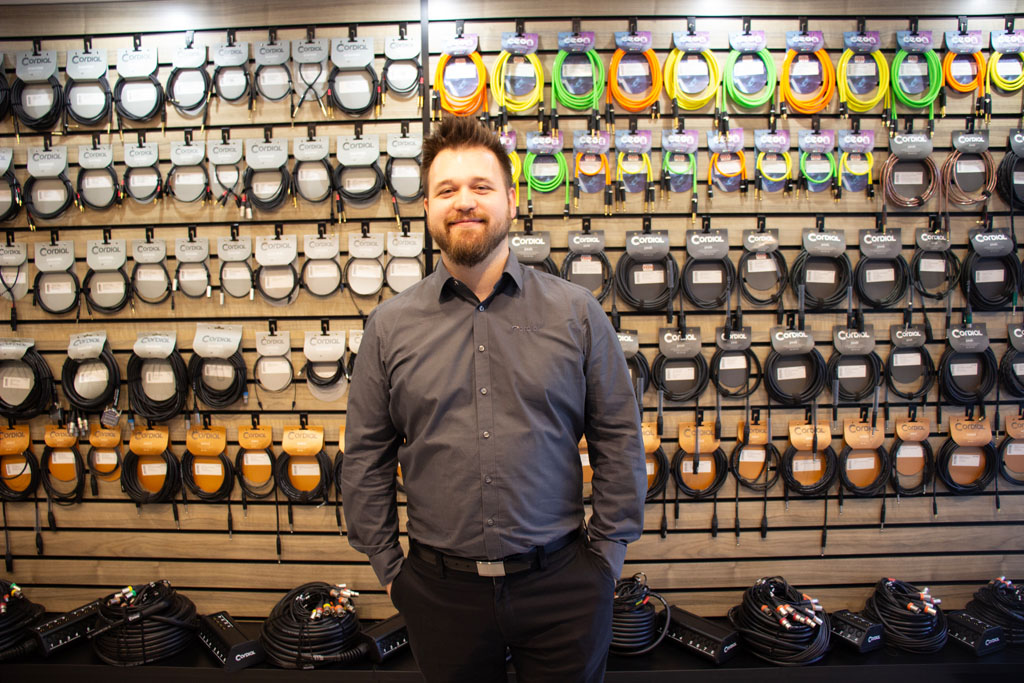
Christian Langer, Head of Sales and Marketing
Standing in front of the huge range of Cordial cables that GT import, Christian had some surprisingly interesting insights into the future of cabling. “There are some new products coming,“ teased Christian. “We’re redoing all of our CAT portfolio. The market trend is heading more and more towards CAT. Even though there has been a trend to optical cables in the past, that has declined.”
One of the biggest influences on what Cordial will do with their CAT range is PoE. “The range of Power-over-Ethernet products is growing exponentially,” observes Christian. “You’ve got to have a decent quality cable if you’re going to run up to 200 Watts in some cases. According to our research, 100 Watts over 100 metres is what’s required the most. We also think that everything might be heading to single pair Ethernet. The gear is not there yet, but we believe that will be the market centre in the next 10 to 15 years. It will be cheaper, it will be lighter; a whole lot of pros.”
NST Audio
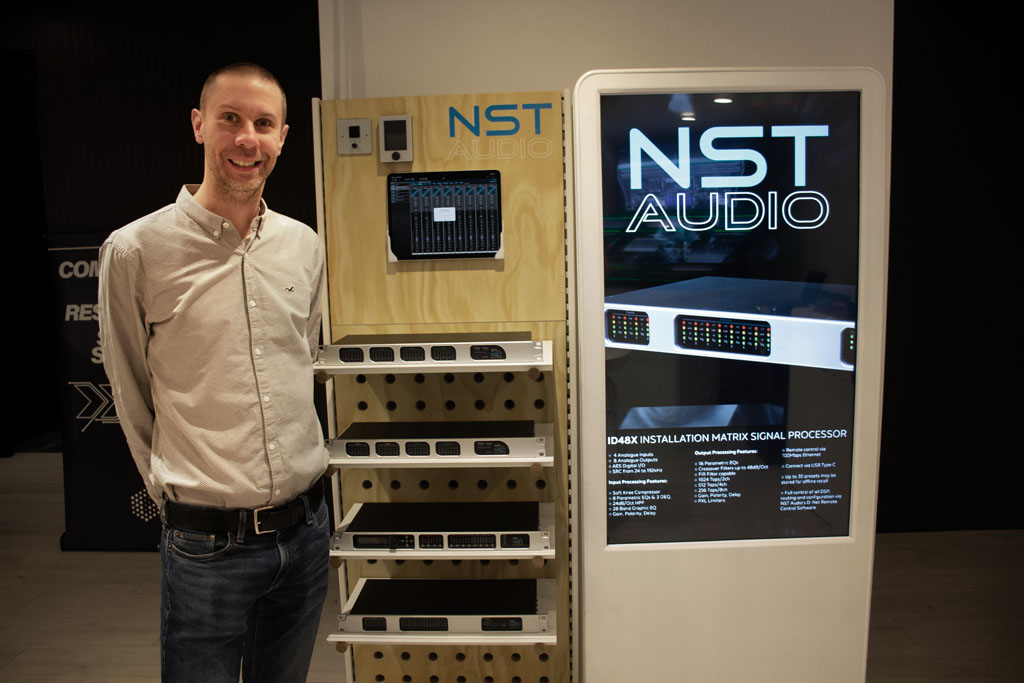
Dan Cartman, Managing Director
High-quality English DSP manufacturer NST Audio were getting themselves under control with new capabilities for their hardware controllers, and V-Remote, the new iOS app to control their systems. “There’s our new VL2 touchscreen PoE controller which adds a whole lot of new features,” explains Dan Cartman. “It’s not just the touch screen. It’s got multiple user levels, password protection, and IP commands to control third party devices. The V-Remote iOS app has pretty similar functionality, including multiple user levels, volume control, and password protection, but will be free in the App Store, available from March 2024. Configuration is stored in the unit, so it makes it totally foolproof for end-users.”
RCF
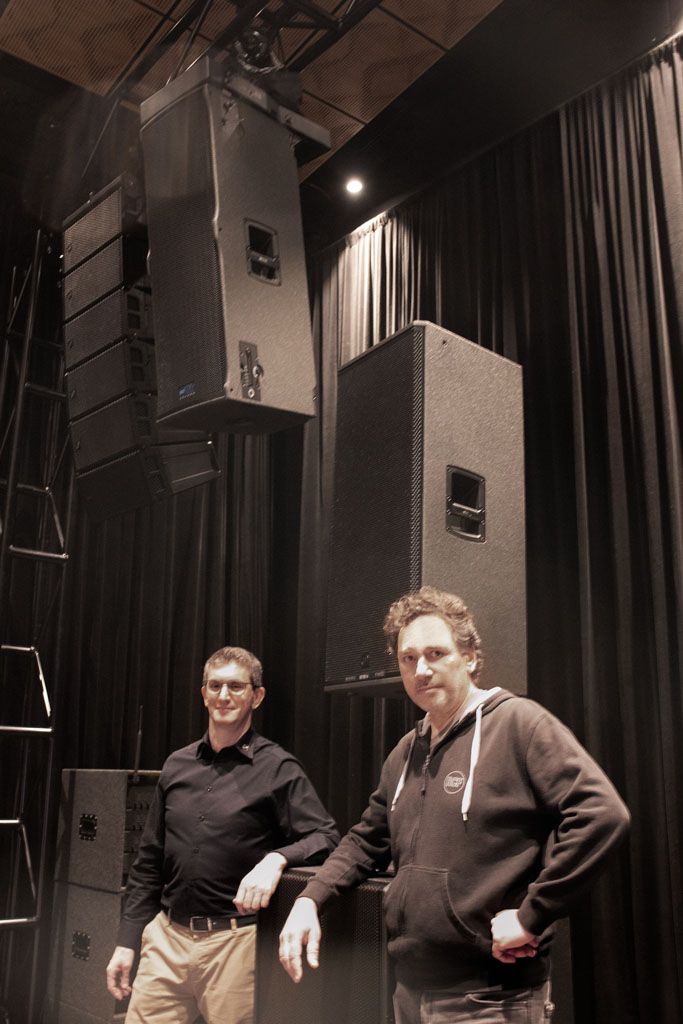
Luccio Serri, Product Specialist Manager, and Luca Aggazi, Sales Manager
Luccio and Luca from RCF were espousing the benefits of the formidable TTL6 three-way active line source sound column. It’s a line array, but in one big box. It’s sporting 2 x 12-inch woofers, 4 x 6.5-inch midranges, and one 2-inch compression driver, with onboard amplification totalling 2200 Watts RMS of power. “We can control the system with our software, RDNet,” explains Luccio. “Version Five of RDNet is now available for download from our website. The TTL6 can also be used as a big array with two of them flown, or can be pole mounted for small to medium applications.”
“The point is, a standard line array is not ideal for everything,” adds Luca Aggazi. “It has many advantages, but the reality is, both visually and acoustically, there are situations where you would prefer a point source solution. Since we were developing a three- way system, this was a way to implement a modern take on a point source system, with a line array’s performance.”
Nexo
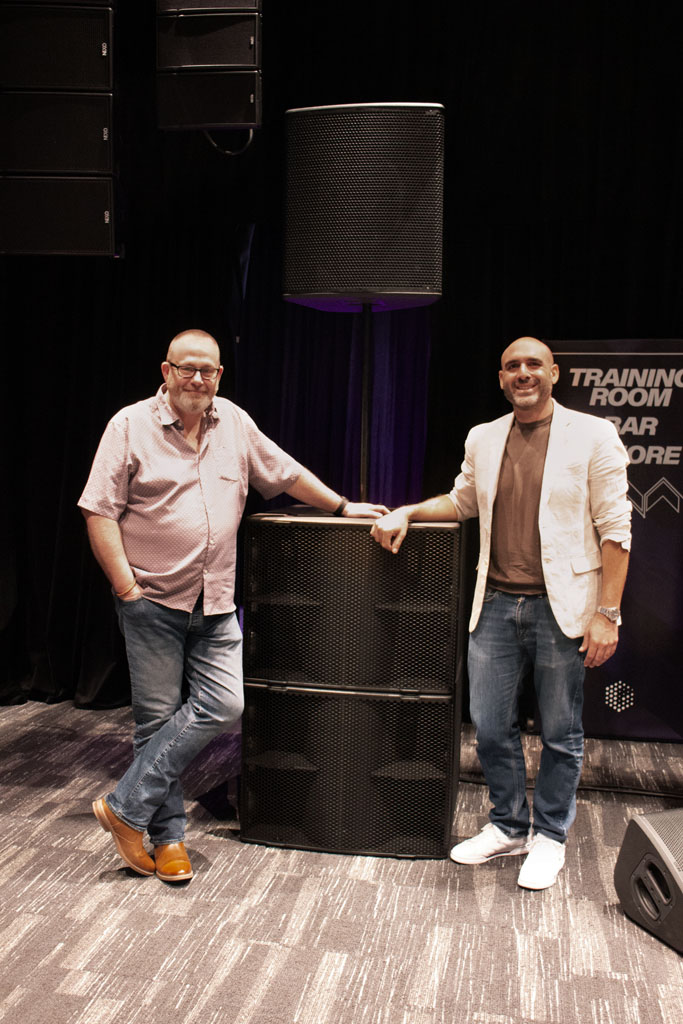
Joe White, Business Development Manager, and Gareth Collyer, Sales and Marketing Director
Nexo’s big news was the P18, an all-new coaxial loudspeaker with a 18” LF Neodymium driver and 4” diaphragm HF driver. It comes with a matched sub, the L20. “The P18 is really the only box like that in the world,” explains Joe. “A lot of people are not going to understand it. Why we would make an 18- inch coaxial product?” And why, indeed, have they?
“It’s a natural extension of the P Plus Series,” explains Gareth. “Our R&D department have created what is probably the most versatile 18-inch box that ever has been on the market. When run active, it gives you so much control that we can see this box being used for live music, gigging bands, nightclubs, through to football stadiums, and even stadia voice evacuation. The other great thing R&D have done is that we have different horn flanges that change the directivity. Just one screw to get the grill off, then magnets hold the flange. The flanges are colour coded so you can see exactly what dispersion you have. It’s brilliant.”
“It’s got an absolutely massive sound,” confirms Joe. “We can see rental companies using a pair of these instead of a line array. You can do the same job and have even more SPL, but with less labour, trussing, rigging, and time.”
PSI Audio
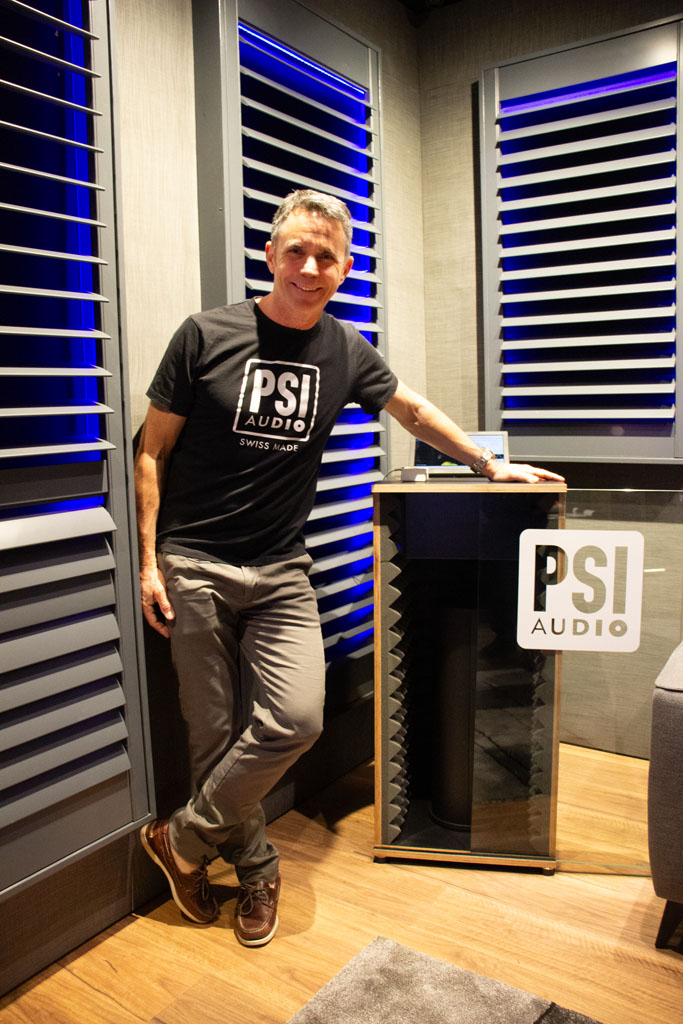
Roger Roshchnik, CEO
One of the most extraordinary things I experienced at GTX was the PSI Audio AVAA C214 active bass trap in action. PSI are a Swiss company that make world-renowned studio monitors, and as such, have learnt an awful lot about how to make very accurate transducers. They’re fixated on their all-analogue signal path keeping phase coherence tight.
The AVAA C214 was housed in a little box in the corner of the studio, and you could stick your head in it. Roger would thump the box, then turn it on, and thump it again, so you could hear the resonance decrease. The amazing part of the demo was when he ran some 80Hz tone through the studio monitors and got me to walk around the studio space and find a resonant node or two – there was a big one at the mix position. Then he turned the AVAA C214 on, and the node disappeared. It was like magic, and I demanded to know how it worked.
“It works like a panel or membrane resonator,” explained Roger. “A panel resonator will move back and forward, absorbing energy or pressure, but it’ll only move passively, and very little. The AVAA C214 uses exactly the same physics, but it’s active. The first thing about active is it can move at any frequency you want. The second is that it can move further. You can be pulling pressure from further away. And that’s what happening in here; you have a microphone that measures the pressure. Then, according to the pressure, the membrane moves back or forward. There’s no tuning; it’s totally broadband between 15 and 150Hz.”
Why hasn’t anyone done this before? “Because it’s very difficult!” exclaims Roger. “You have to be extremely accurate with the movement of your membrane, and you have to be extremely quick between the microphone and the movement. The fact that we know how to make membranes move properly, with low latency, in phase, is why we were the first ones to come up with it. And it’s very tricky.” Incredibly, the AVAA C214 can get rid of bass resonances in a room 45 times the size of the unit!
Sound Devices
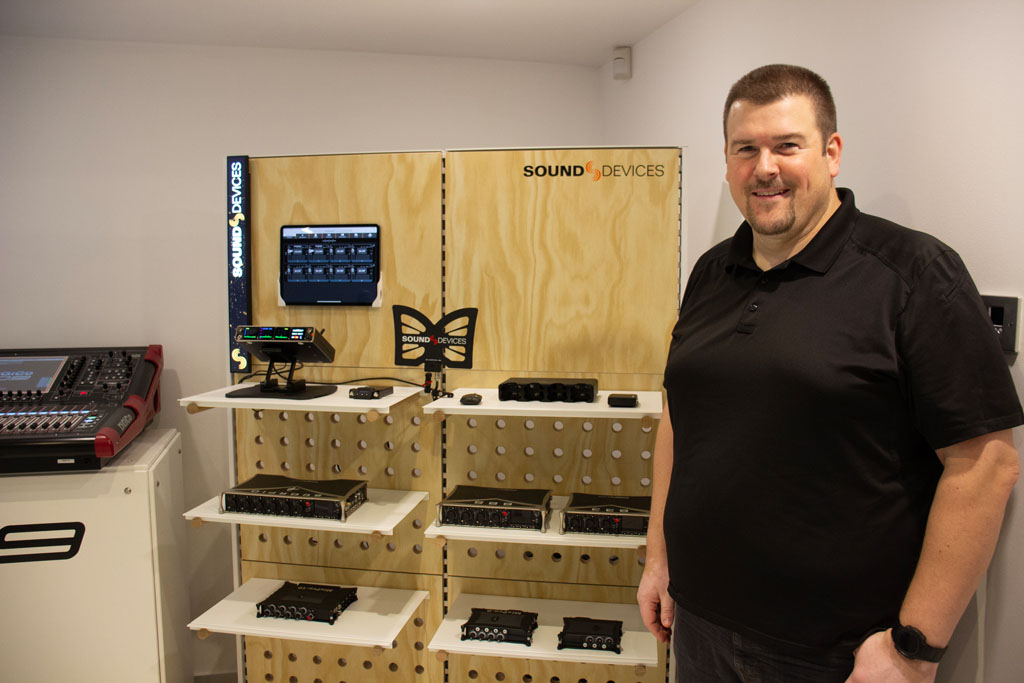
Gary Trenda, RF Applications Engineer
Sound Devices are a relatively new addition to the Group Technologies stable. They’re very well known in broadcast and TV for their ‘bag mixers’ that sound techs on location use to capture audio. They’re now making major moves into wireless, with some incredibly capable new product. The developments come in the wake of Sound Devices acquiring Audio Ltd in 2018, a UK manufacturer and developer of high-performance wireless microphone systems.
“We’re taking that heritage and growing it into wireless products like our Nexus here,” says Gary. I had just been raving about seeing the Super Nexus wireless receiver and manager at ISE in Barcelona. The Nexus is a half rack version, and handles 16 channels. “The Super Nexus is the evolution to a full-width rack receiver, handling 32 channels. That opens up more markets for us.” Both sizes of Nexus can assign frequencies based on where you are in the world, operate in multiple bands, scan and manage RF, and more. They are extremely powerful devices, to say the least!
Gary was showing me the paired A20-TX body pack transmitter. “This is what you’d expect from a full-sized body pack transmitter, with a couple of special Sound Devices additions,” Gary pointed out. “There’s the really wide tuning range, from VHF all the way up to 1.5Ghz. There’s a flexible mic pre on it that can run your standard lav mic or headset mic, but you can also do 48 volt phantom power with a balanced audio input to run a condenser mic. It’s got digital input capability for AES, or even AES42, so you can connect a wide variety of sound sources.”
Subscribe
Published monthly since 1991, our famous AV industry magazine is free for download or pay for print. Subscribers also receive CX News, our free weekly email with the latest industry news and jobs.






